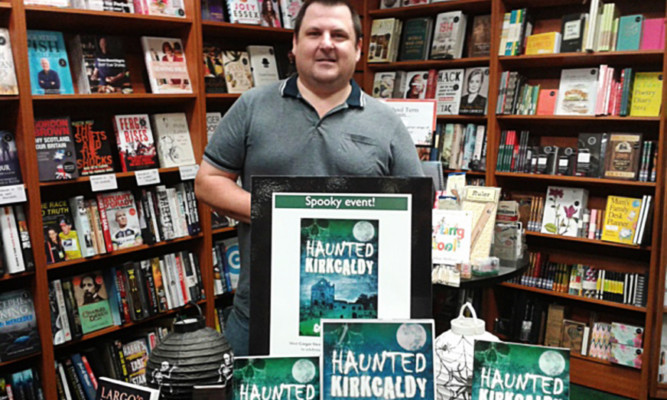Fife-based paranormal investigator Gregor Stewart’s revelation of a Fife town’s darker side has hit number one in a spooky book chart.
Published by History Press, Haunted Kirkcaldy contains a chilling range of spooky tales drawn from the history of Fife’s largest town.
And now, the book has hit number one in Waterstones.com best-sellers list for ghosts and poltergeists.
From haunted public houses to the ruins of the ancient Ravenscraig Castle, it features a collection of ghostly goings-on, phantom footsteps and playful poltergeists.
Illustrated with more than 50 images, Gregor says Haunted Kirkcaldy is specially written to make the reader’s blood run cold.
The 44-year-old married father of two, originally from St Andrews and now living in Cupar, has worked as a building standards surveyor with Fife Council for around eight years.
He told The Courier: “My interest in the paranormal was first sparked when I was a child by my grandfather, who was a painter specialising in gold leaf work.
“This led him to work in many historical buildings, such as Falkland Palace, where he used to hear the tales of hauntings that he would pass on to me.
“Over the years I have built up a considerable collection of stories, books and articles about haunted locations, as well as local history books that help to trace the true stories behind the reported ghosts.
“Around two years ago I finally took the plunge and wrote my first book, Scotland’s Hidden Hauntings, which was independently published as an e-book and in paperback.
“It received a positive response so I wrote another two books before I had sufficient confidence to approach publishing companies.
“The History Press offered me the opportunity to write a book concentrating on a local town as part of their ‘Haunted’ range.
“I suggested Kirkcaldy as I had worked there for several years and knew of some of the reputedly haunted locations in the town.
“The research for the book was far more time consuming than I had anticipated, as there is a distinct lack of documentation of reported cases compared to other towns.
“This, however, also made the research that bit more interesting as I learned a lot.”
